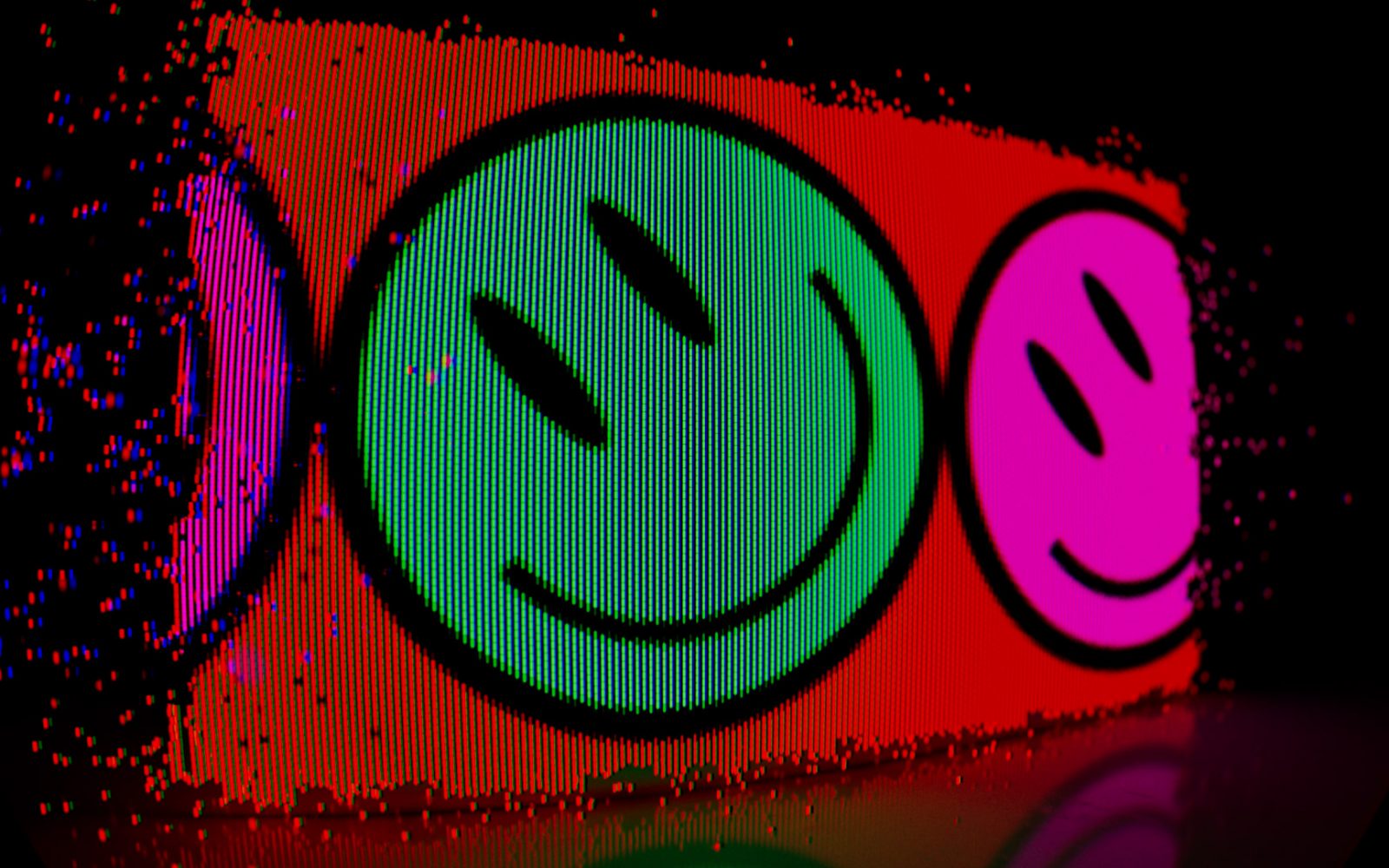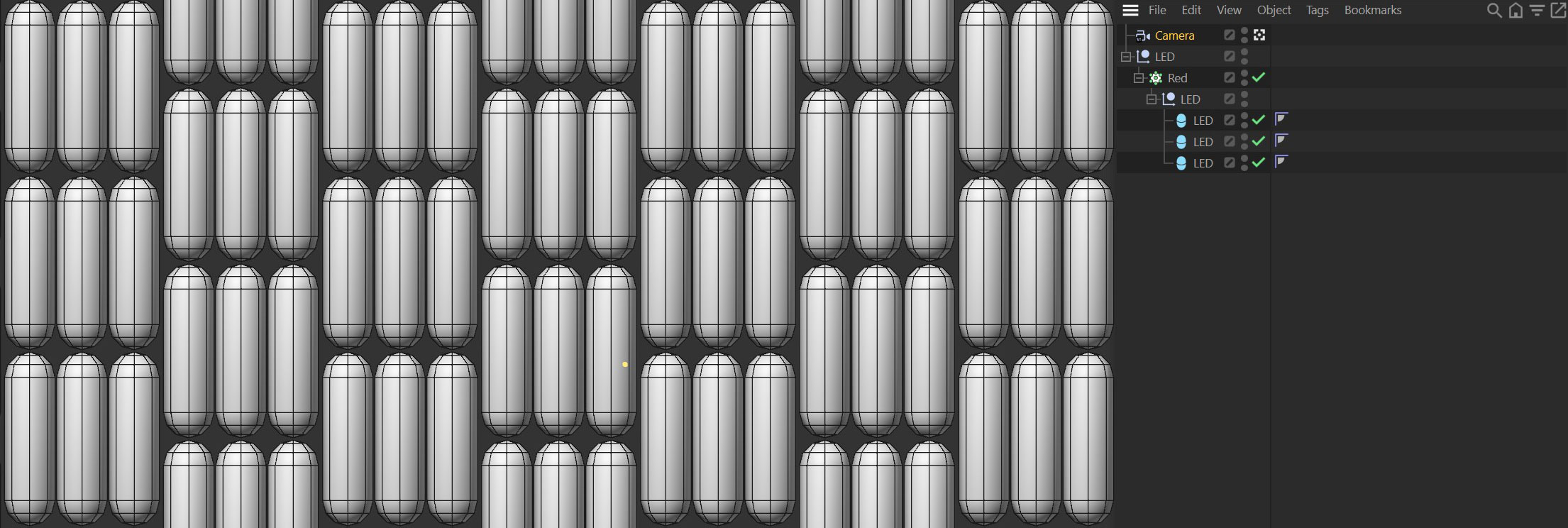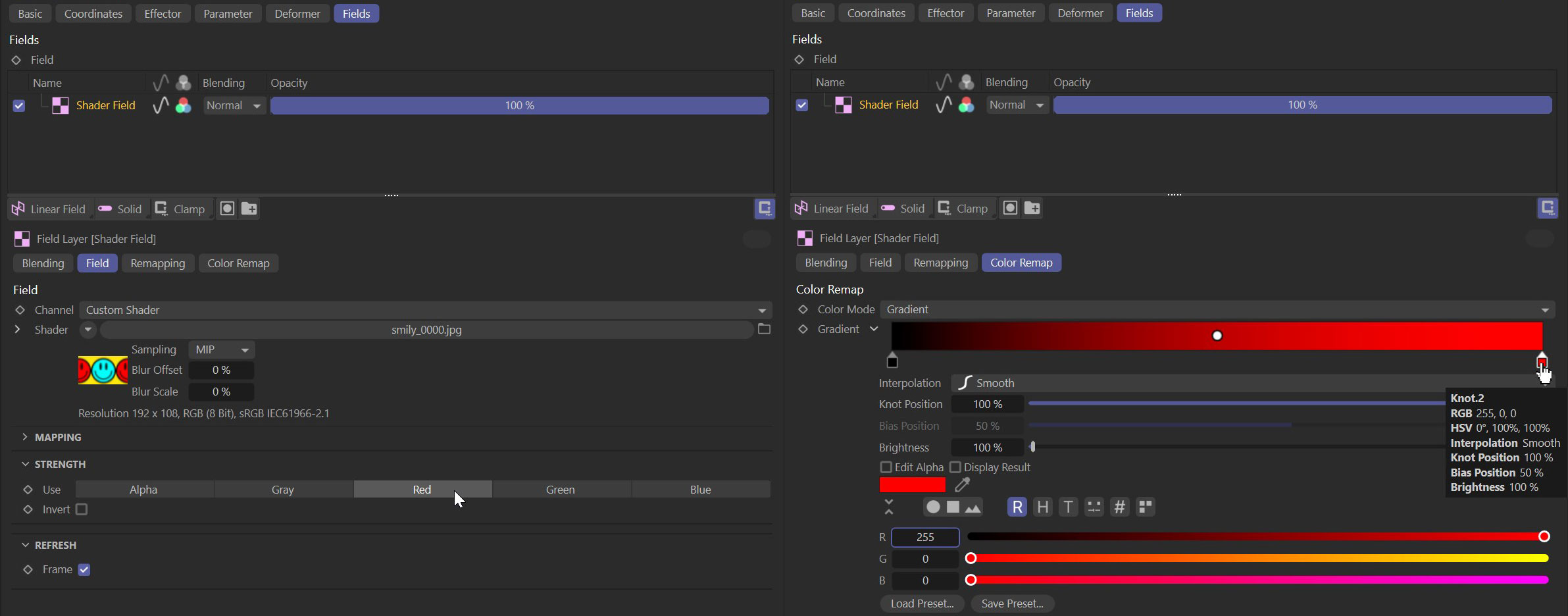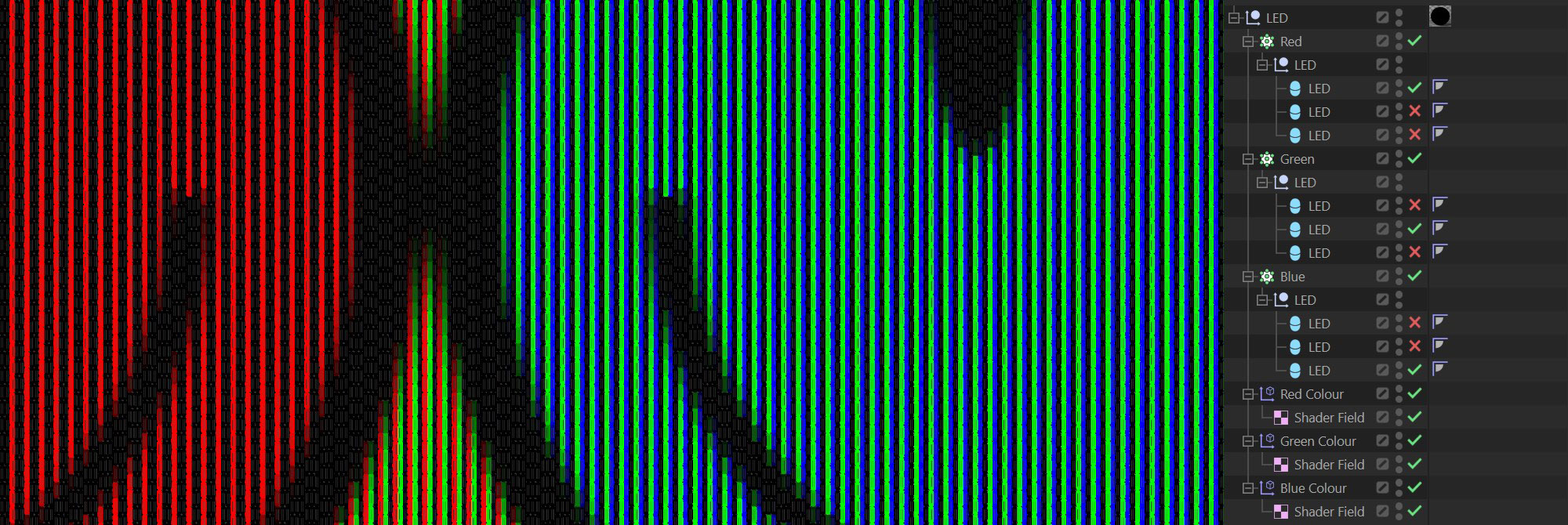
Build an RGB Display in Cinema 4D
In this 10 minute tip, quickly build an RGB pixel display in Cinema 4D using a combination of Mograph tools.
The concept is simple, create three capsule objects and position them into a square shape, this is our pixel and each capsule will be used for the red, green and blue component. This pixel is then grouped under a null and cloned into a honeycomb array. Use Multi-Instances so that the scene stays memory efficient and fast to navigate, even with thousands of clones.

Next add a Plain Effector and rename it Red, disable all the parameters except for Color, which uses Field Color. Under the Field tab, add a Shader Field and load in your image or image sequence. The clones should inherit the colour from the image. To use only the Red channel, fold down the Strength parameter and select Red from the tabs. Now the Field is using only the Red channel modulate its strength.
Remap this by switching to Color Remap tab and choosing Color Mode – Gradient. The gradient needs to start Black on the left side and Red on the right side. Select the left knot and set the RGB values to 255, 0 ,0. Now you should see only the Red channel being displayed on the clones.

By repeating this with two more effectors for green and blue, you will end up each effector controlling the RGB channels respectively. Create two more copies of the Cloner Object for green and blue. Swap out the effector on each Cloner, so they are using the correct colour. Now you have three Cloners, one for each RGB channel. The final step is to disable or delete the capsules in each Cloner so that they are only displaying either the first (red), second (green) or third (blue) capsule based on their colour.

To render this, the material needs to be emissive, simple create an RS Material and disable the diffuse colour and reflection. Add a Color User Data node and wire this into the material input, Overall / Emission. Set the Emission weight to 2, the pixel display will now contribute to the scene illumination when rendered with global illumination.
